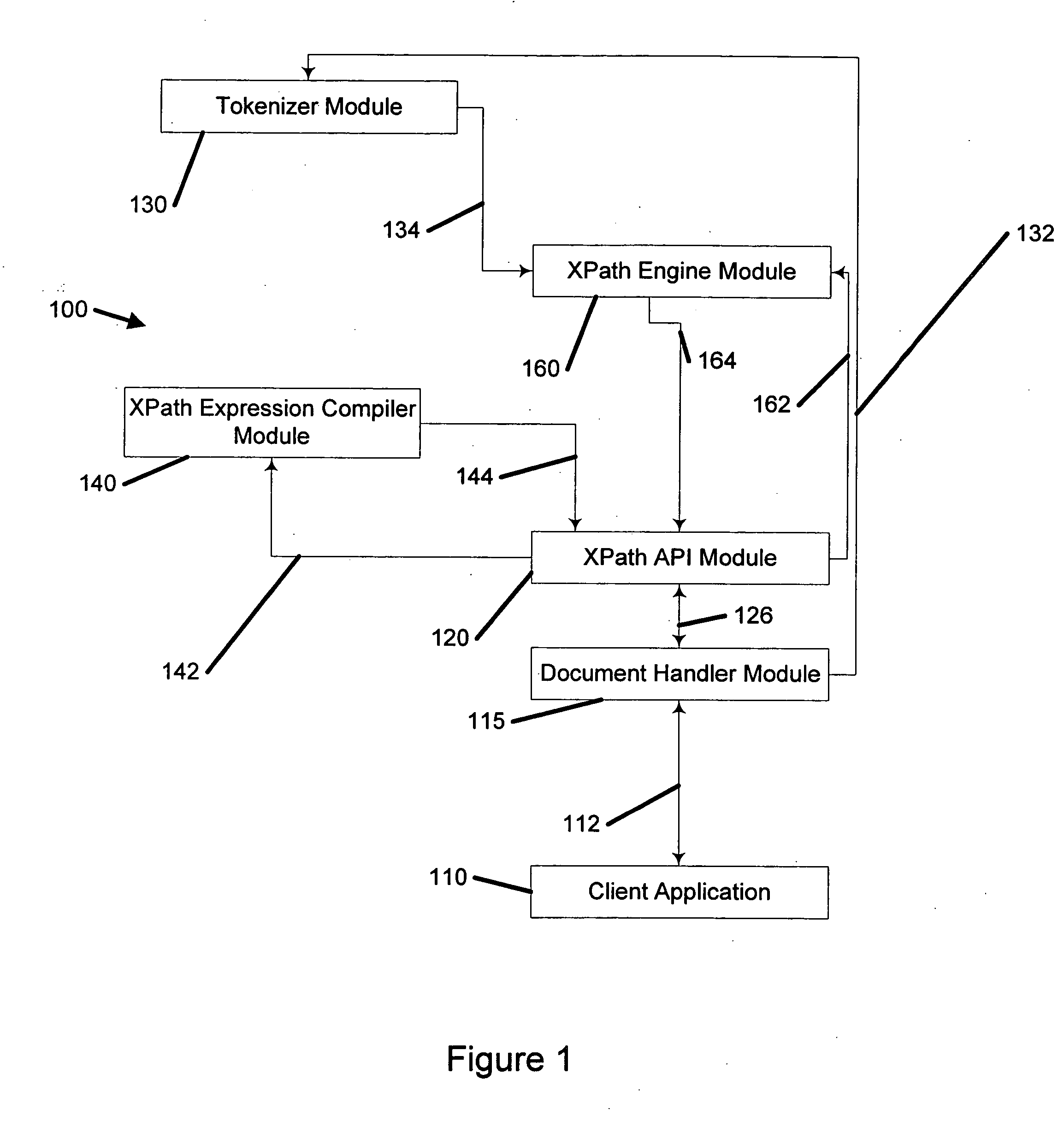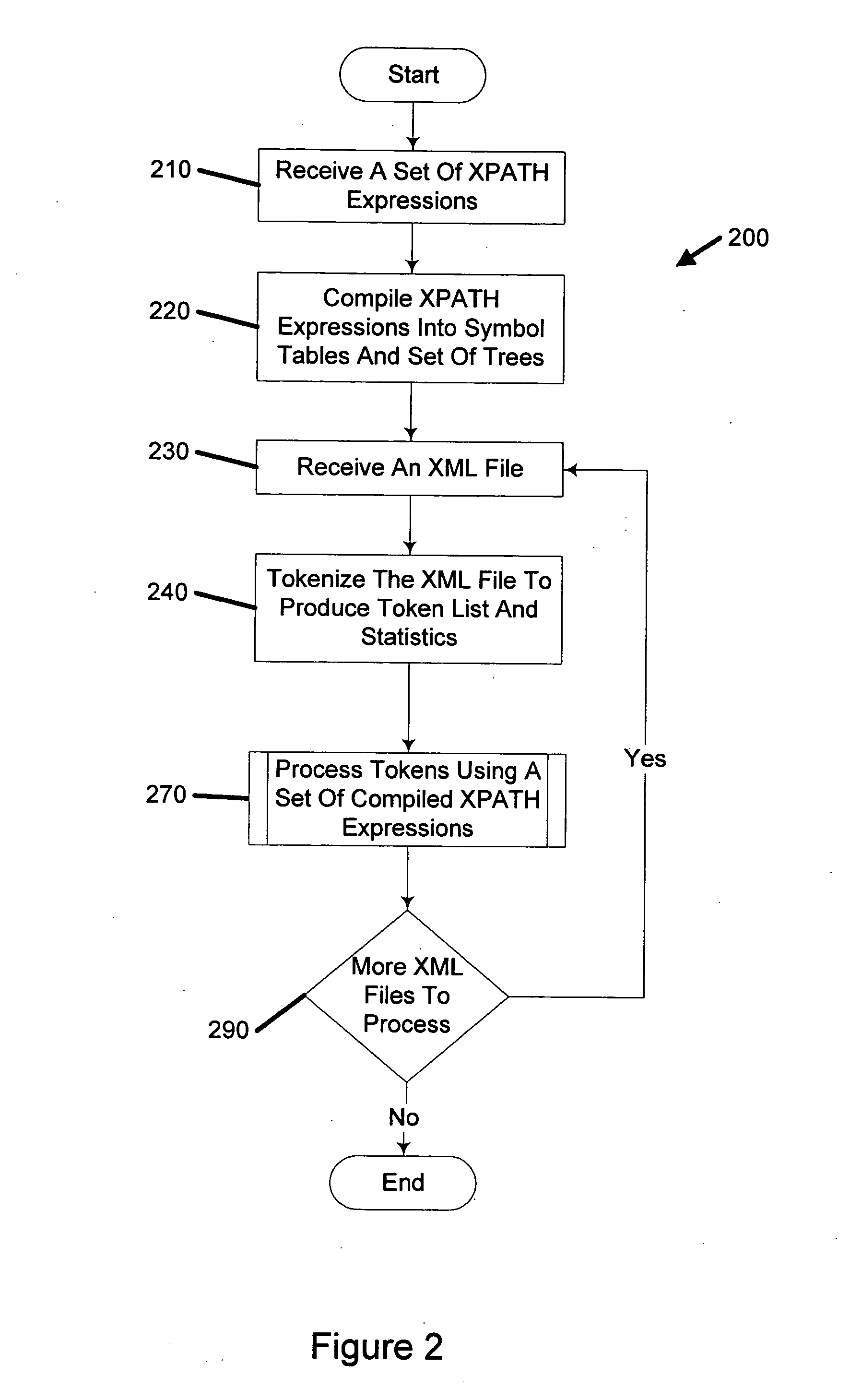System and method of XML query processing
a technology of xml query and system, applied in the field of system and method of xml query processing, can solve the problems of xml document consumption, dom processing may not be practical, html does not provide a general mechanism for html documents,
- Summary
- Abstract
- Description
- Claims
- Application Information
AI Technical Summary
Benefits of technology
Problems solved by technology
Method used
Image
Examples
Embodiment Construction
” one will understand how the features of this invention provide advantages that include faster and more efficient processing of large XPath queries in, e.g., content processors.
[0014] One embodiment is a method of checking whether an XML document is well formed. The method may include receiving contents of the XML document. A plurality of tokens may be generated based on the contents of the XML document. A depth of each of the plurality of tokens is determined. A maximum depth of the XML document is calculated based on the depths of each of the elements. The XML document may be rejected if the maximum depth exceeds a predetermined depth.
[0015] Another embodiment is a method of processing queries of an XML document. The method includes generating a plurality of tokens based on contents of the XML document. The tokens may form a sequence of tokens. At least one statistical measure of the contents of the XML document is generated. At least one query expression is compiled to a first ...
PUM
 Login to View More
Login to View More Abstract
Description
Claims
Application Information
 Login to View More
Login to View More - R&D
- Intellectual Property
- Life Sciences
- Materials
- Tech Scout
- Unparalleled Data Quality
- Higher Quality Content
- 60% Fewer Hallucinations
Browse by: Latest US Patents, China's latest patents, Technical Efficacy Thesaurus, Application Domain, Technology Topic, Popular Technical Reports.
© 2025 PatSnap. All rights reserved.Legal|Privacy policy|Modern Slavery Act Transparency Statement|Sitemap|About US| Contact US: help@patsnap.com



